👍 Attention
Core Idea
The main assumption in sequence modelling networks such as RNNs, LSTMs and GRUs is that the current state holds information for the whole of input seen so far. Hence the final state of a RNN after reading the whole input sequence should contain complete information about that sequence. But this seems to be too strong a condition and too much to ask.

Attention mechanism relax this assumption and proposes that we should look at the hidden states corresponding to the whole input sequence in order to make any prediction.
Details
The architecture of attention mechanism:
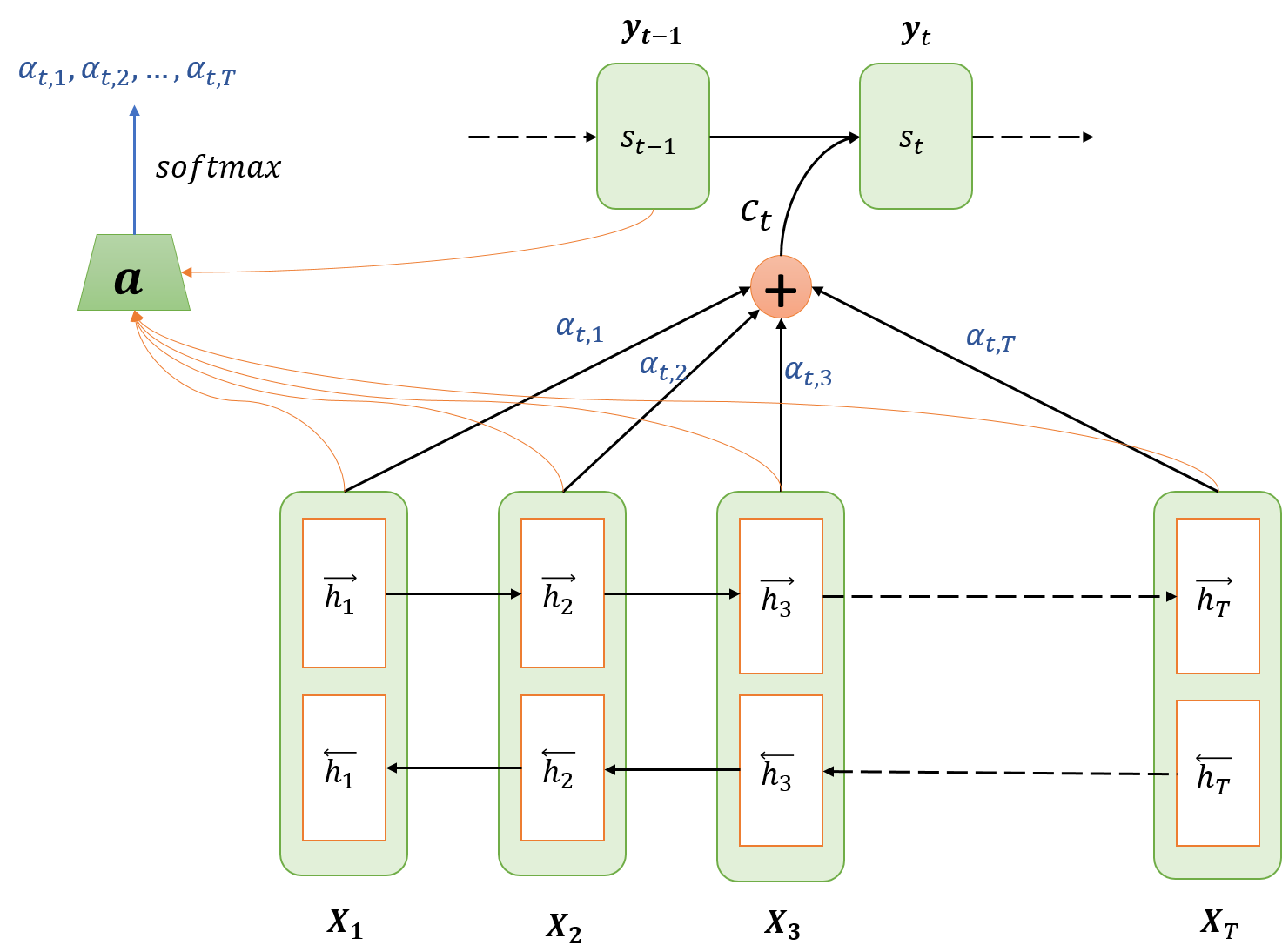
The network is shown in a state:
- the encoder (lower part of the figure) has computed the hidden states corresponding to each input
- the decoder (top part of the figure) has run for steps and is now going to produce output for time step .
The whole process can be divided into four steps:
Encoding
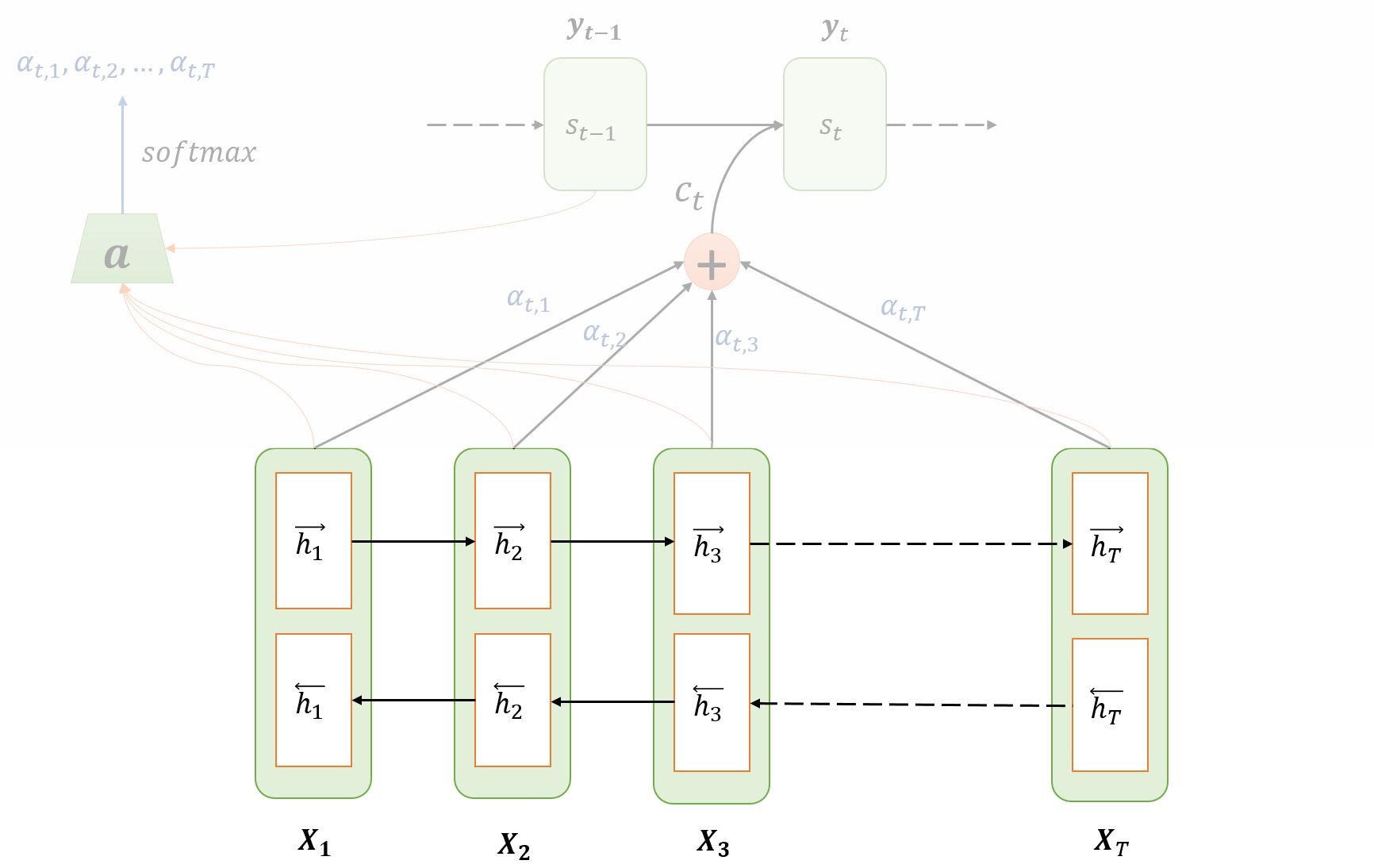
: Input sequence
- : Length of sequence
: Hidden state of the forward RNN
: Hidden state of the backward RNN
The hidden state for the -th input is the concatenation of -th hidden states of forward and backward RNNs.
Computing Attention Weights/Alignment
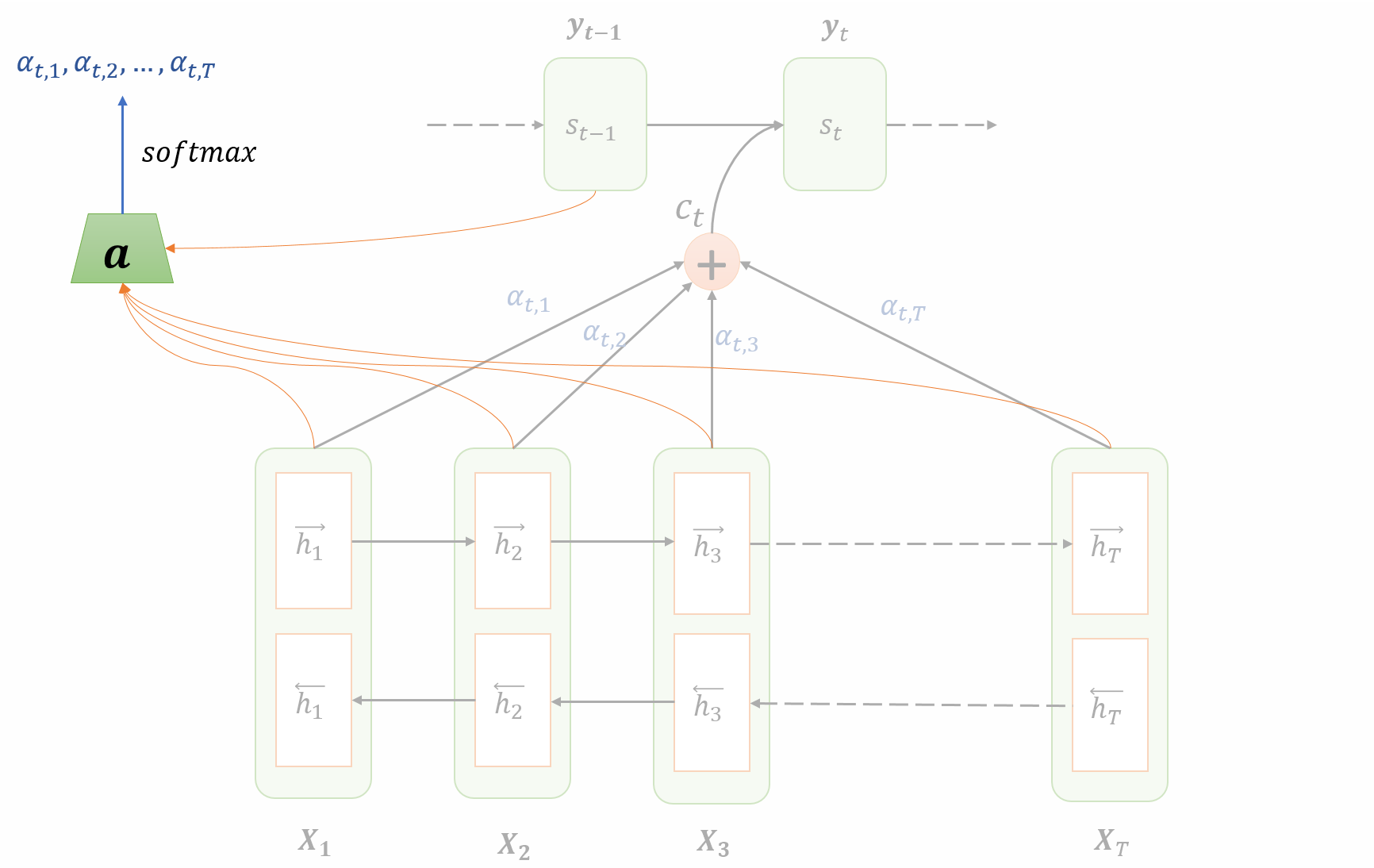
At each time step of the decoder, the amount of attention to be paid to the hidden encoder unit is denoted by and calculated as a function of both and previous hidden state of decoder :
- : parametrized as a feedforward neural network that runs for all at the decoding time step
- can be visualized as the attention paid by decoder at time step to the hidden ecncoder unit
Computing Context Vector
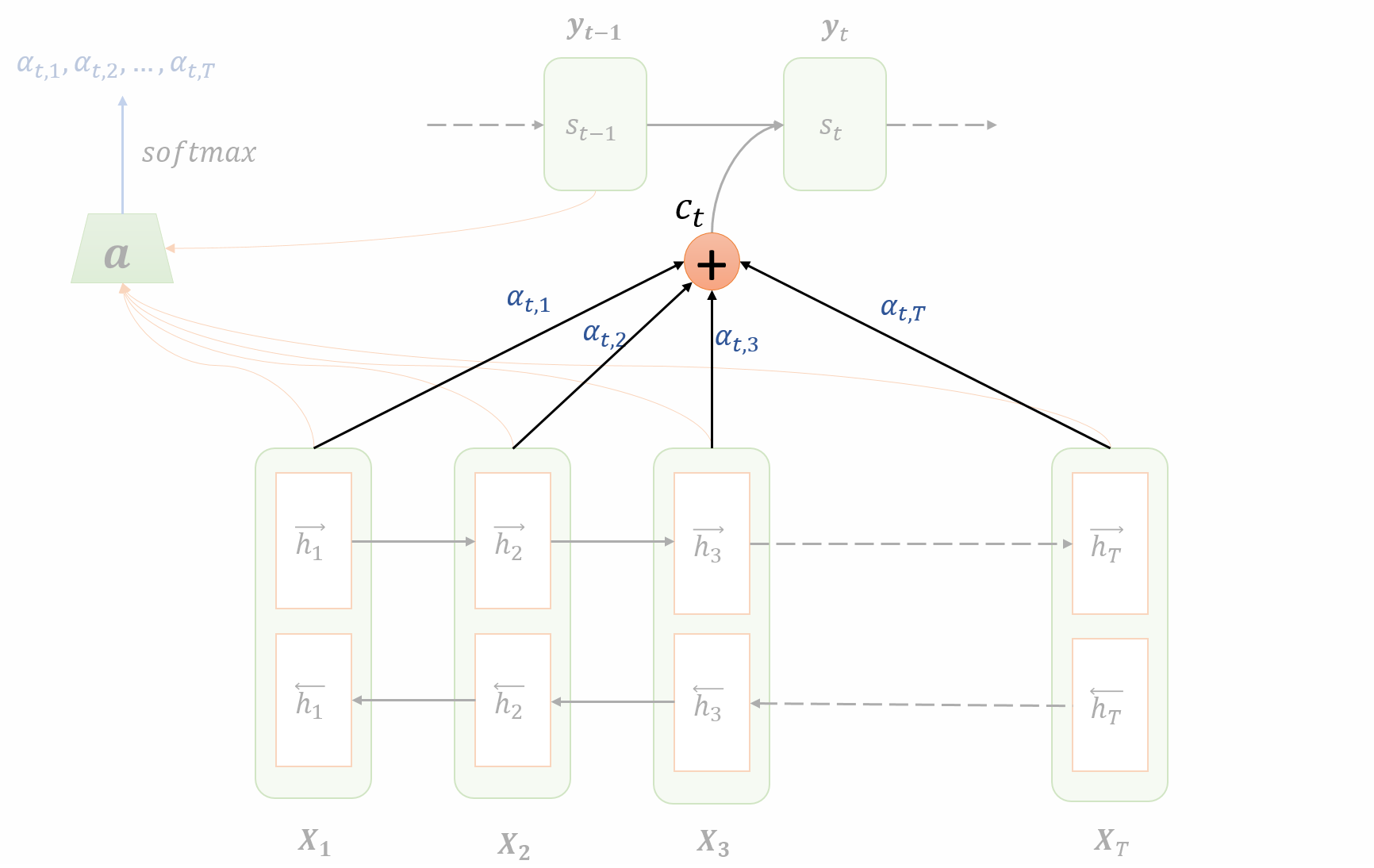
Now we compute the context vector. The context vector is simply a linear combination of the hidden weights weighted by the attention values that we’ve computed in the precdeing step:
From the equation we can see that determines how much affects the context . The higher the value, the higher the impact of on the context for time .
Decoding/Translation
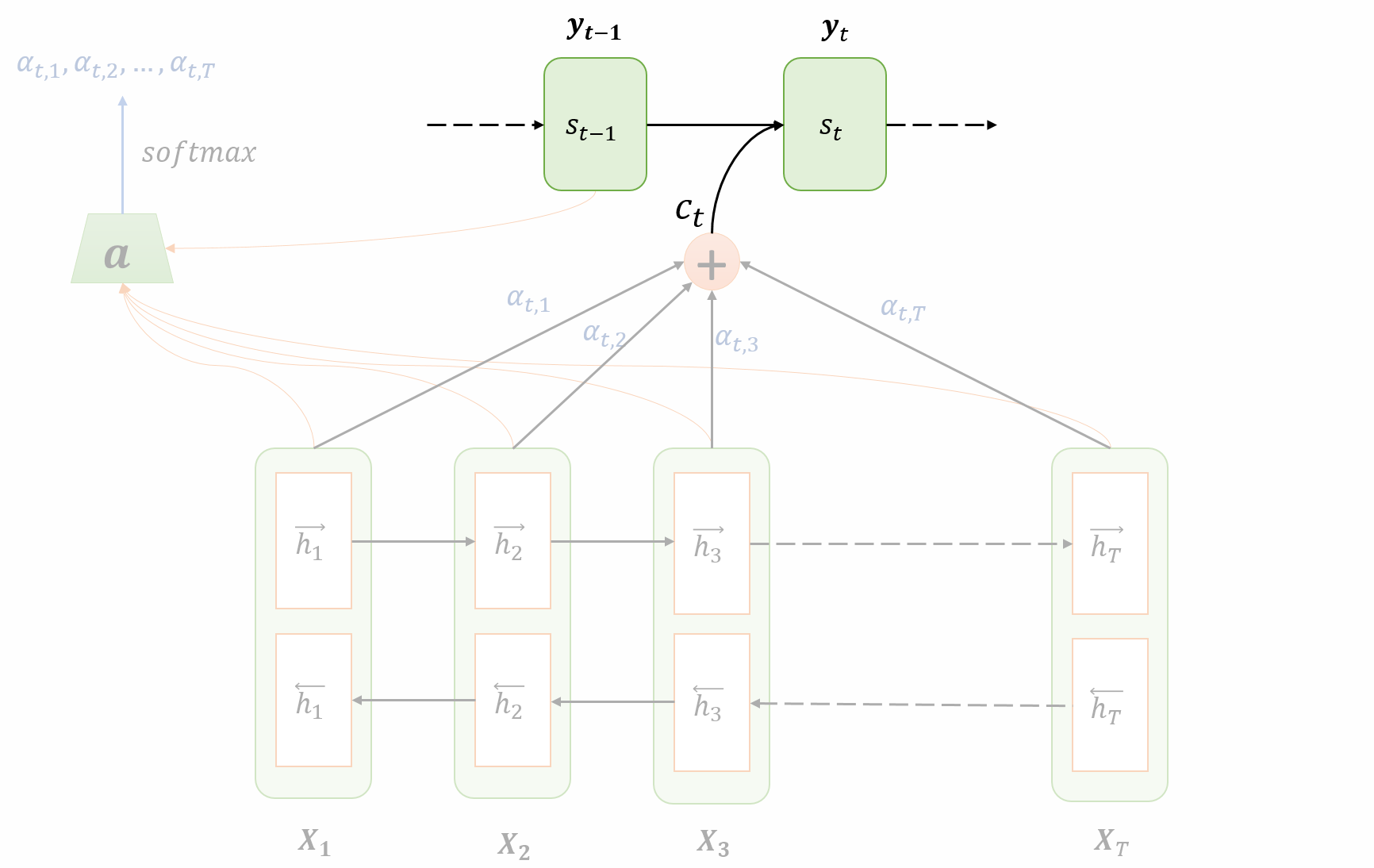
Compute the new hidden state using
- the context vector
- the previous hidden state of the decoder
- the previous output
The output at time step is